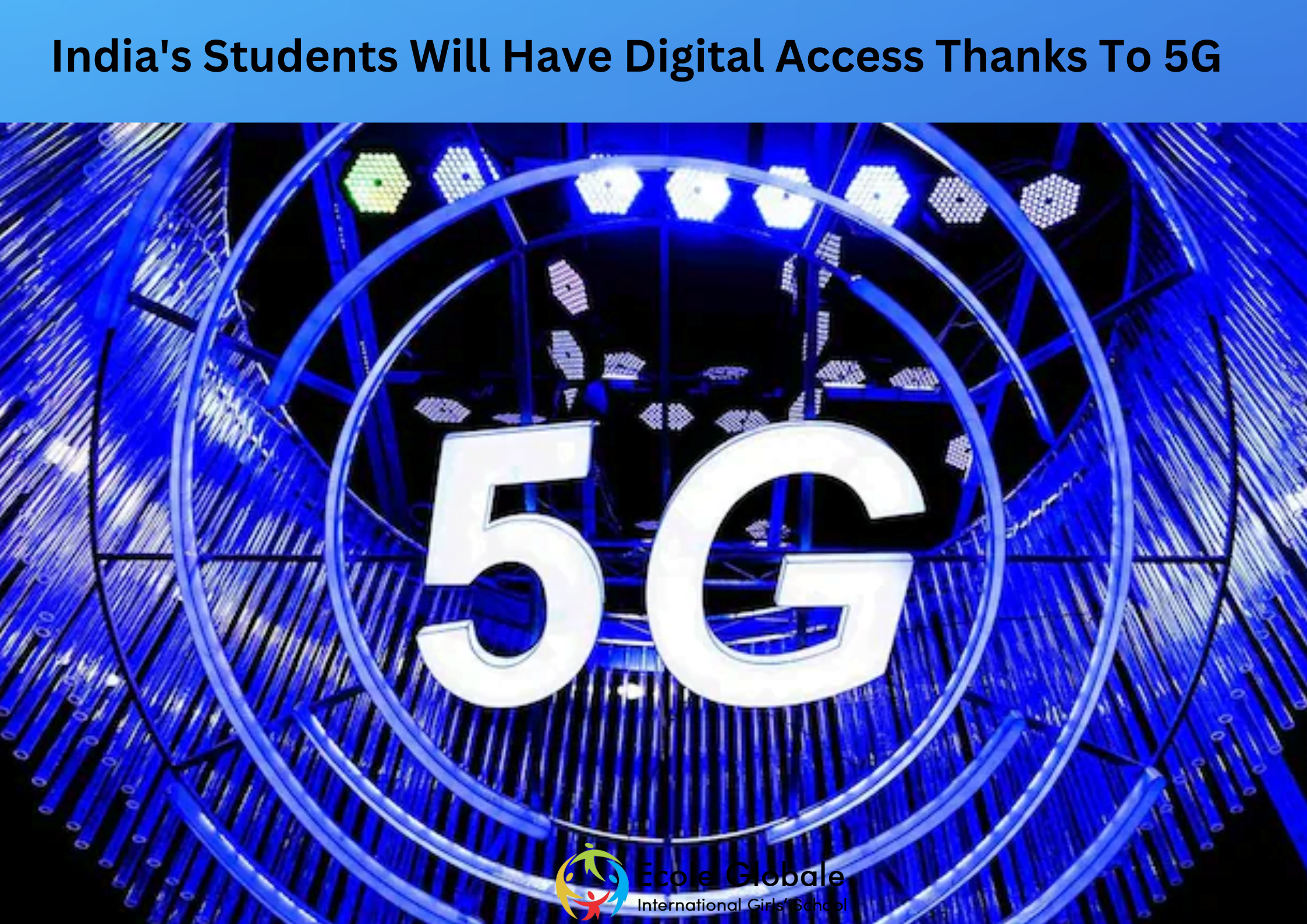5G Network is the next generation of cellular technology. It promises to bring high-speed internet to more people, which means more opportunities for education and learning.
The Indian government has been working hard to bring digital access to students in the country, but it’s been slow going. The trouble is that India is a large country with many remote areas that are difficult for telecom companies to reach. But 5G promises a solution: As per research conducted by Boarding Schools in India, it is much higher network capacity means telecom companies will offer more affordable data plans and expand their networks more quickly than ever before.
That means schools and universities will be able to get internet access, which will allow them to teach students remotely instead of having them travel long distances to attend classes. Of course, there are still challenges—such as making sure that students have access to computers or tablets where they live—but the 5G Network is an important step forward in bringing digital education to India’s rural communities!
Also Read: How Lack Of Internet Access Affects Schooling In India
Digitalisation Of Education

With the COVID-19 pandemic, India has been making many changes to their education system. One such change is the digitalization of education in India. The government has done this to ensure that students can still get an education during this time of crisis. That is important because it allows children to study and learn even if they can not attend school due to pandemic-related issues.
This new system also allows students to attend school from home instead of having to travel somewhere else if they live far away from where their school normally is located.
Another survey done by the best schools in India shows that The digitalization of education in India has allowed more people who were previously unable to attend school due to COVID-19-related issues, now have access to these types of courses without having any problems getting them done because they can do them at home.
Theoretically, it can enhance digital collaboration, assist in developing individualized learning experiences, and foster learning while on the go, among other advantages. But in the excitement of speed-driven technology, the role that physical classrooms played in revolutionizing education should not be overlooked.
The Covid-19 pandemic also pushed the digital divide to the fore as the Indian educational scene rushed toward digitalization. But according to experts, with 4G, more individuals today have access to internet connectivity than in a brick-and-mortar school.
Fifth-generation cellular technology, or 5G networks, will only serve to extend that reach by enhancing digital collaboration, aiding the development of personalized learning environments, and promoting learning on the road, among other benefits.
Why Is A 5G Network Essential For Digital Access In India?
The 5G network is essential for digital access in India because it provides a more reliable, faster connection than previous generations of wireless connectivity.
In the past, cellular networks have been limited by their capacity, which is how much data they can handle at any given time.
That means not everyone could access the internet at once—or even at all—and service would slow down as more people tried to connect to the network. It also meant that some users would experience a lot of lag or latency online.
The creation of a “digital university” will be made possible by 5G in a way that has never been possible, according to Vijay Patil, chancellor and president of the DY Patil University in Navi Mumbai. According to him, 5G Network would make remote learning more participatory, especially in rural regions, and educational rules more tolerant of students. As a frequent customer, he thinks it will significantly increase access to and student friendliness in education worldwide.
The 5G network solves these problems by providing a higher capacity than previous generations of cellular networks. It also offers tremendous speed and reliability, which means that users can expect better connections overall and less lag or latency when using their devices or accessing services online.
5G Proficiency

Millions of students and affected workers intensified their efforts to gain new skills throughout the pandemic, albeit online. The worst affected were those who couldn’t access digital gadgets, reliable internet, and electricity. According to a Coursera spokeswoman, the internet is a basic necessity, and smartphones are adequate tools for closing the skills and digital divides.
With the advent of 5G mobile networks, we are looking at a new era of connectivity. 5G Network will bring about a massive increase in speed, coverage, and reliability. But it will also require an overhaul of the current telecommunications infrastructure, which means that there will be many new jobs created in this field.
Concerns We Need To Keep Note Of
There are three issues. First, it is crucial to determine the financial viability of ed-tech programs through government-sponsored initiatives to entice private companies to provide the necessary network technologies, devices, and content to make them successful.
To prepare instructors and students to use digital resources, there needs to be a push toward digital literacy. To make content more accessible to the general public, vernacular content development is necessary for number three.
The Indian government is implementing a new 5G network, which will have many implications for the country’s education system. The introduction of this network will make it possible for schools to create ed-tech programs that are more affordable and accessible for students. However, there are concerns about the economic feasibility of such programs, and about whether or not students will be able to take advantage of them due to their lack of digital literacy skills.
The goal is to provide internet access across the length and breadth of India by this time. That means students in rural areas will also benefit from ed-tech programs that were previously only available in large cities.
There are concerns however about whether or not these programs will be economically feasible for schools to implement. They require additional resources such as computers and other hardware costs which may be too expensive for some schools that do not receive much funding from central governments or private donors.
In addition, most teachers do not have sufficient training in how best to utilize these technologies within their classrooms when the push comes to shove.
Disadvantages Of Introducing 5G Network In India

There are several disadvantages to introducing a 5G network in India.
The first and most important thing is that it will be too expensive for the general public. The second disadvantage is that the telecom companies have been given licenses to use only 4G spectrum for a limited time, so there are not enough resources to create new infrastructure. The third disadvantage is the lack of coverage, as there are many places where you can’t get a signal from your mobile phone or Wi-Fi connection.
According to experts, given the existing substantial gap in digital infrastructure, 5G networks are the country’s best chance to achieve the desired level of digital inclusion.
India faces a challenge in modernizing its digital infrastructure because just 35% of the country is already fiberized, compared to a required rate of 55%. In such a situation, 5G-enabled FWA is an affordable solution that can accelerate time-to-market and facilitate widespread adoption, according to Bajaj.
Technology And Education Go Hand In Hand

One cannot exist without the other.
Without technology, we would not have the means to educate our children, let alone keep them safe. Technology has allowed us to take our classrooms beyond the walls of the classroom and into their daily lives.
We can now teach them skills that will help them succeed in life, as well as help them through tough times. We can use technology to reach students who may be struggling with learning or behavioral issues by providing them with tutors who are available 24/7.
Technology also allows us to keep students engaged and excited about learning because they can interact with their teachers in new ways.
Teachers can create videos for students or post their assignments online so that students can work on their own time instead of being forced into a traditional class setting where many students struggle with paying attention.
That is because they are unable to move around freely like they would if they were at home playing video games or doing something else fun outside instead of sitting down at a desk all day long listening intently while trying not to fall asleep!
Conclusion
With the help of the 5G Network, India’s young people will have unlimited online access. According to experts, 5G is the country’s best chance of achieving the desired level of digital inclusion given the current substantial gap in digital infrastructure.
India faces a challenge in modernizing its digital infrastructure because just 35% of the country is already fiberized, compared to a required rate of 55%. In such a situation, 5G-enabled FWA is an affordable solution that can accelerate time-to-market and facilitate widespread adoption, according to Bajaj.
For any queries related to parenting, schooling, or any student-related tips, click here to check out our latest blogs






